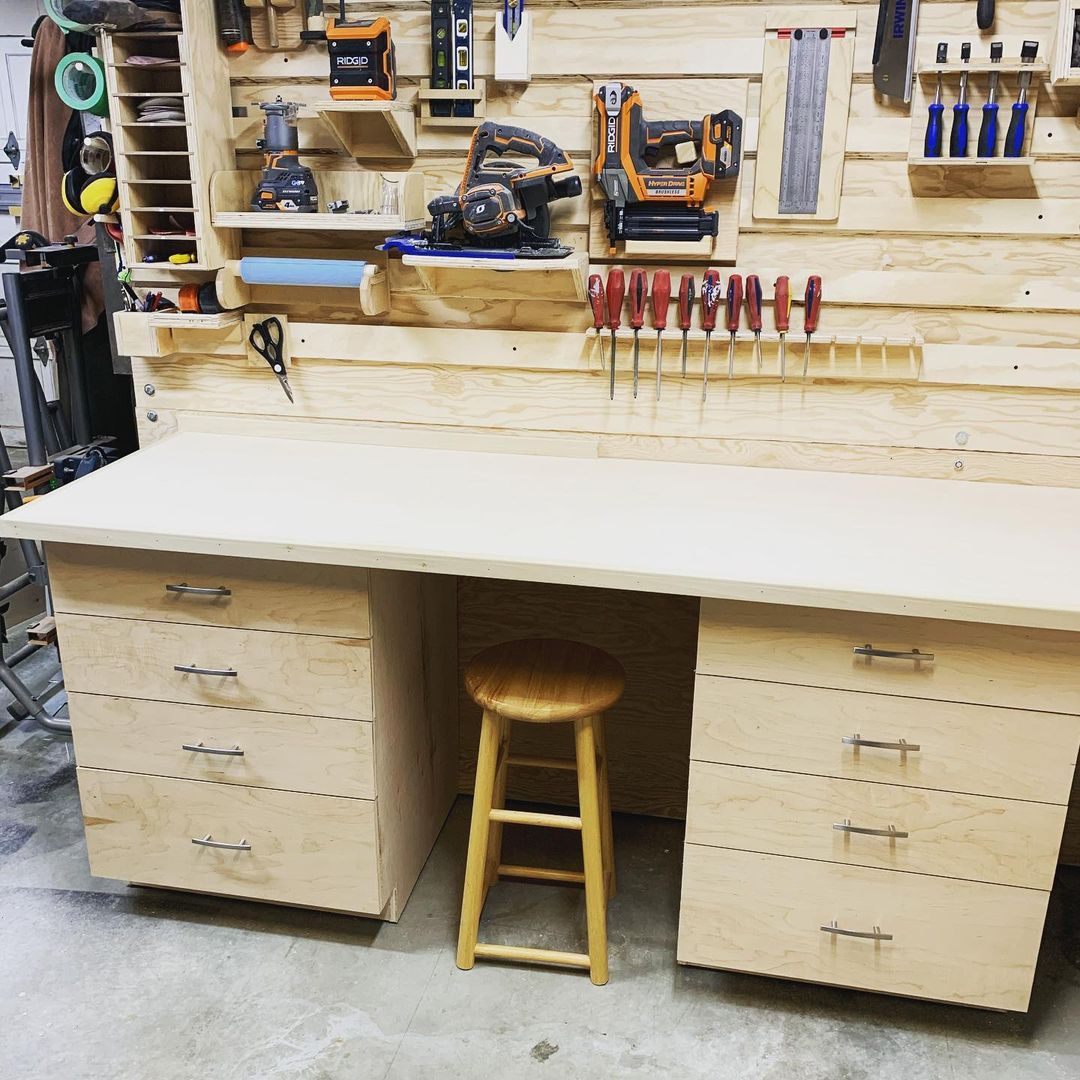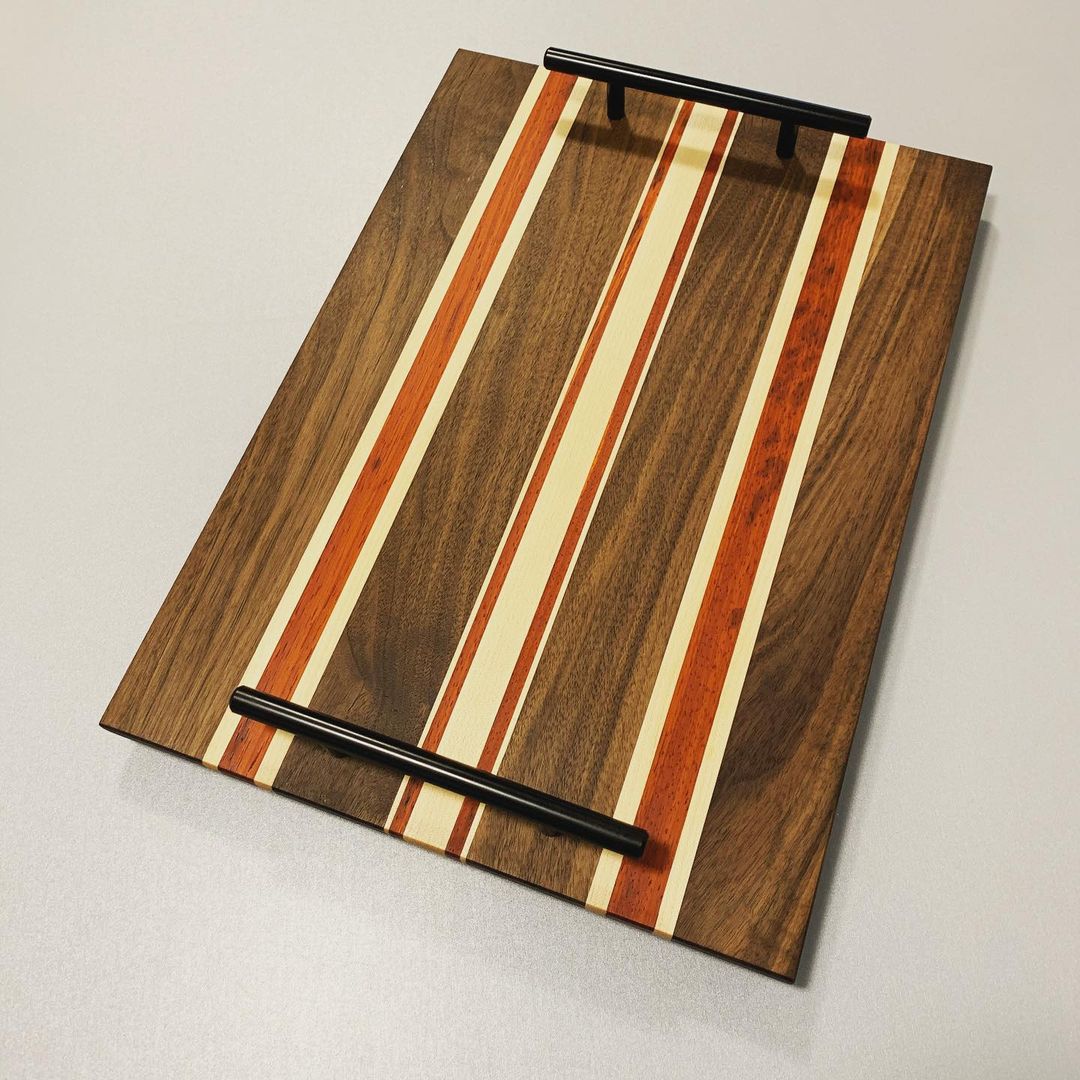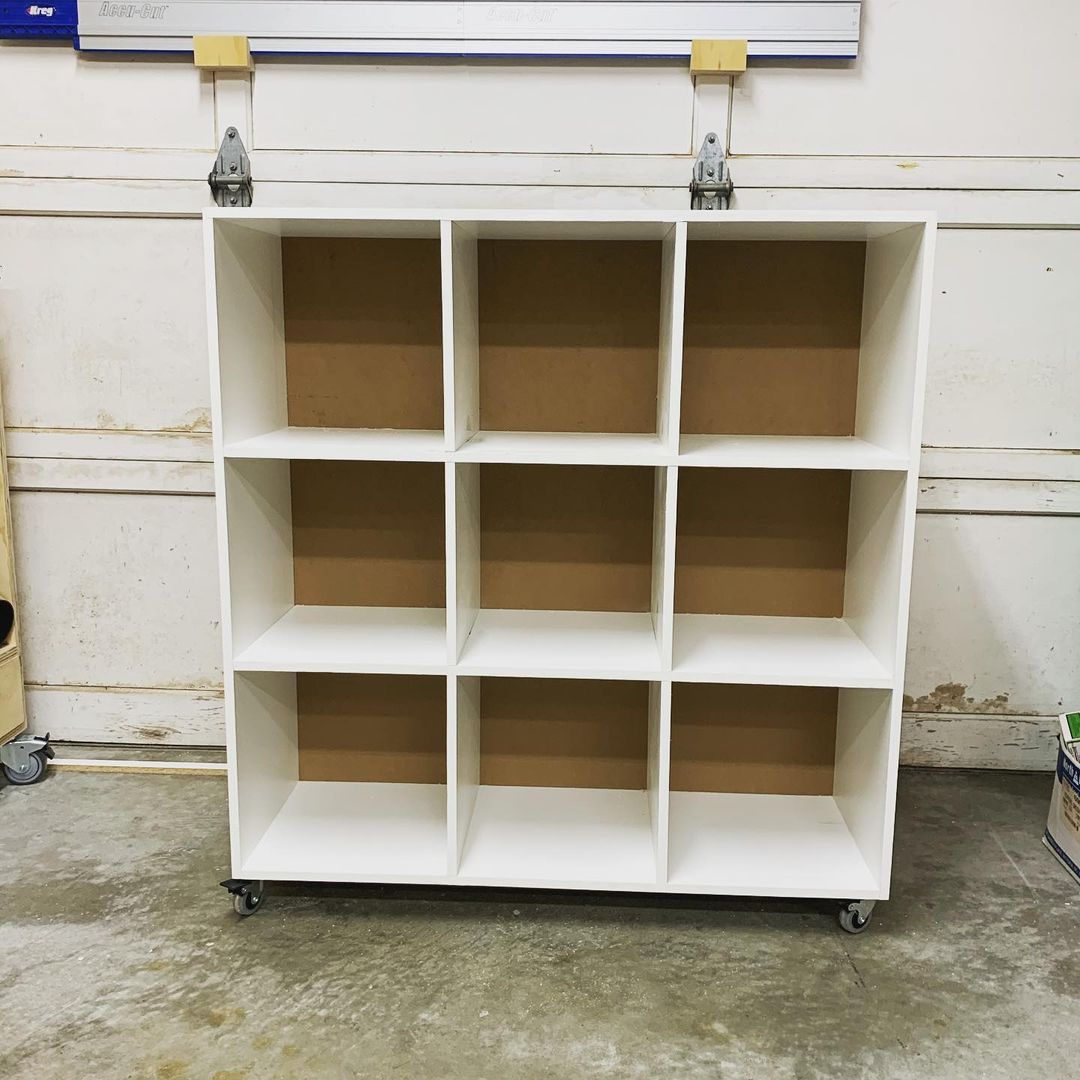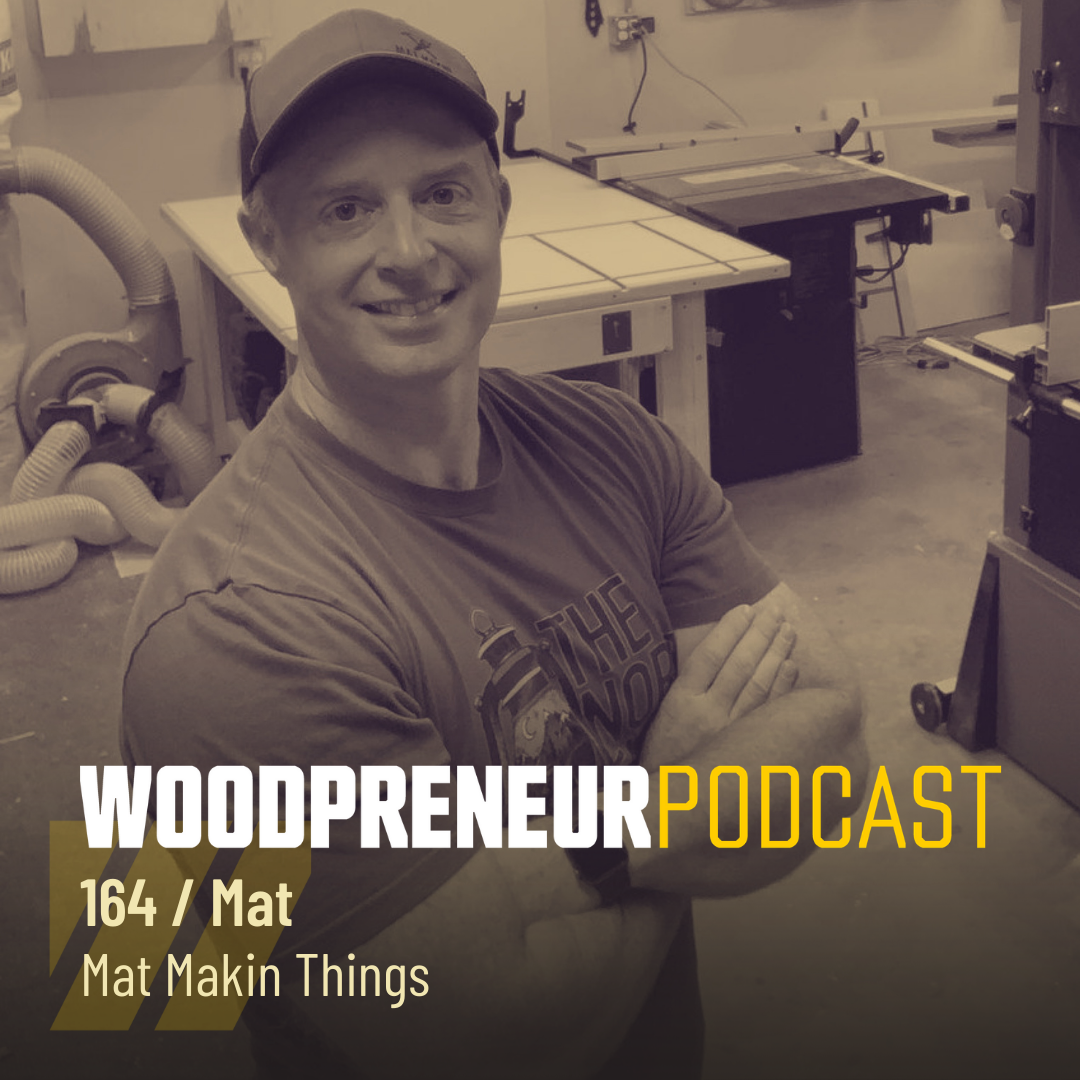When thinking about how he got started Mat muses that he didn’t even actually consider himself a business, he considered himself a hobby woodworker. How it really took off was when the local CrossFit gym wanted a CrossFit pile of blocks. Mat took on the project and then requests just kept coming in. Eventually the offerings expanded as requests for tables and benches came in. That’s how it really spiraled, as Mat says, it all started from a box.
When Mat first started, he didn’t have a brand, but he had a connection through his social media and got a branding iron shipped out to him.
In terms of growth Mat says that he feels his story is similar to a lot of wood businesses as he’s just been scaling as the work comes in. If someone wants something and he has the tools to do it, he takes on the job, or if it’s time to invest in a certain tool he hasn’t worked with or when he takes on something he’s never done but has the capacity for, he’ll take the project and then do some trial and error prototypes before the finished product goes to the customer.




Organic Social Media Marketing
Mat started his Instagram handle to hopefully get the word out about his business and products but the growth that it has gone through shocks Mat. He is very grateful to everyone who follows him. Originally he started it because he didn’t know how to create a website, and he didn’t want to give out his personal cell number to a bunch of people. Mat figured the quickest and simplest way to show his products and show what he can do for people was to start an Instagram page and then post his stuff on there. If they liked what they saw, then they could just DM him. Mat really enjoys building furniture and the larger builds out of his shop currently are locally based. The business comes from word of mouth and for right now that’s enough for Mat. A very clever thing that he has done however, is when he does a build he creates the plans in a sketching app and then sells the build plans through Etsy. Another avenue for organic marketing and lead generation is Etsy, but Mat does it in a unique way. Steve asks who Mat’s clients are and Mat notes that while the clients for his physical builds are local, his overall client base is worldwide thanks to the electronic builds. In terms of the internet and the connection that it fosters and promotes, Mat and Steve both agree it is an incredible tool. Another excellent part of the digital side of the Woopreneur sphere is the community. Mat notes that the community is a big part of it for him, the feeling that you are a part of something bigger.
The Future for Mat Makin’ Things
“Right now, I think I’m where I want to be, I think just word of mouth and building these furniture pieces, but where I would like to see it eventually [would be] having a website where I post my products all the time and people reaching out to have builds done.” Mat would also like to devote more time to the digital design rendering aspect of the business he’s been exploring and would like to create some official quote terms. Steve and Mat discuss the logistics of timing and pricing and the appropriate way to value work, time, products and overhead. Mat notes that for him it was difficult since he genuinely loves building, but the realization that if he raised his prices and charged closer to what he was truly worth he could put that money back into the business and not only learn to make more things, but also invest in better equipment and create even higher-end products.

